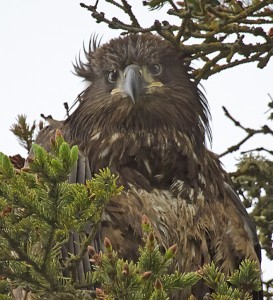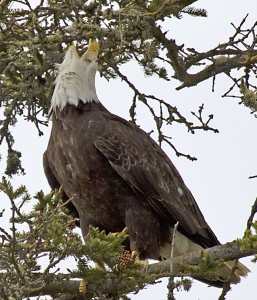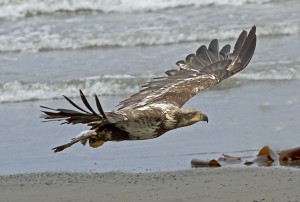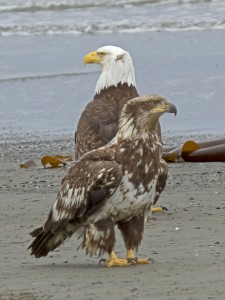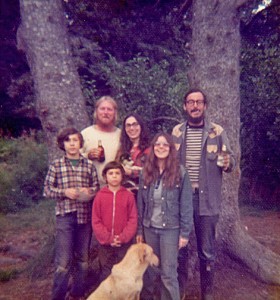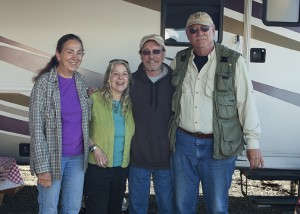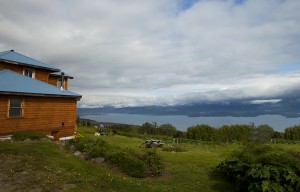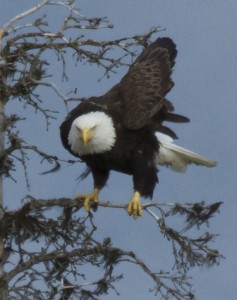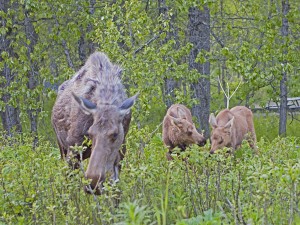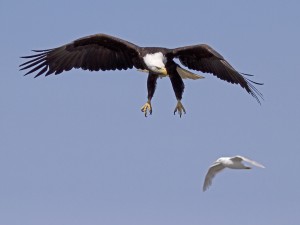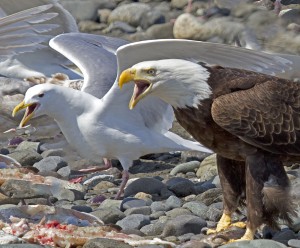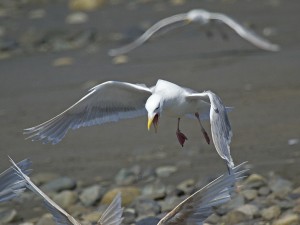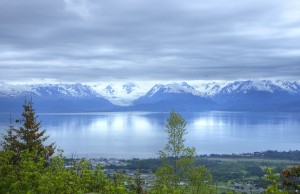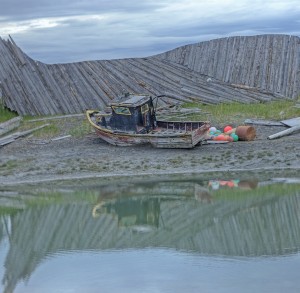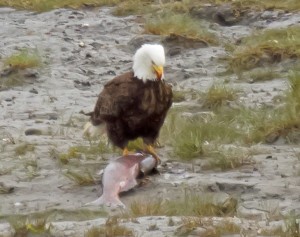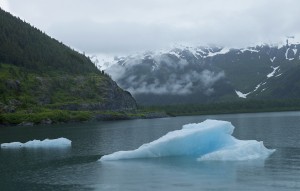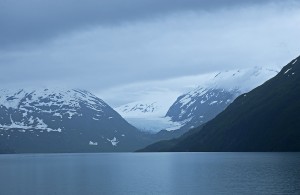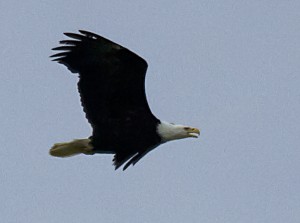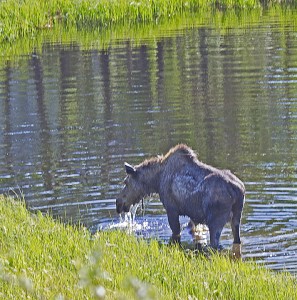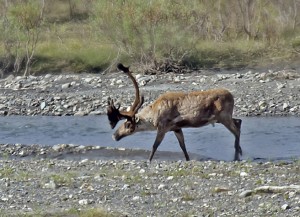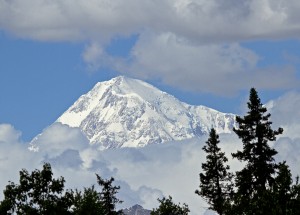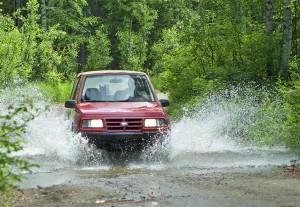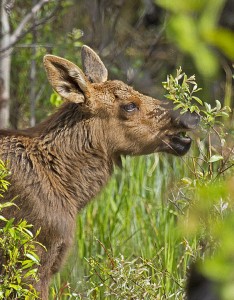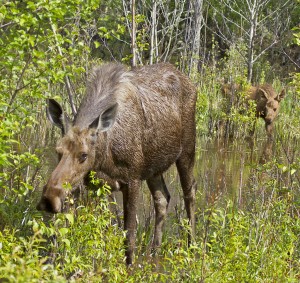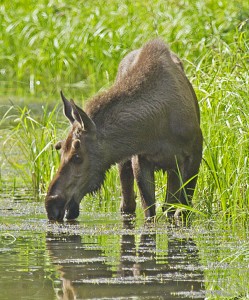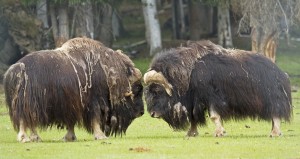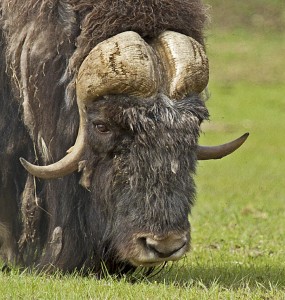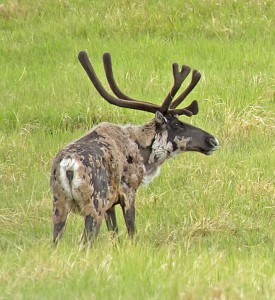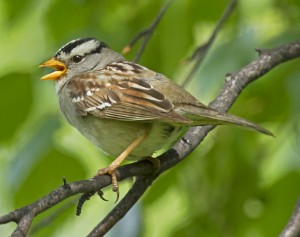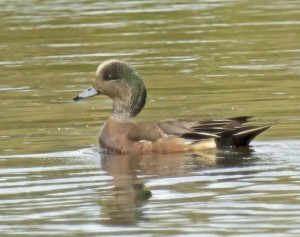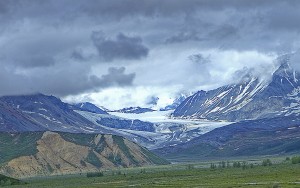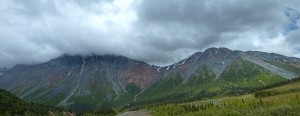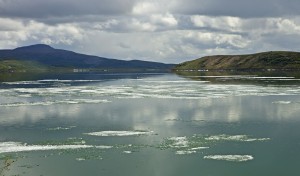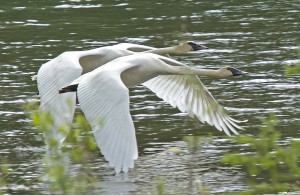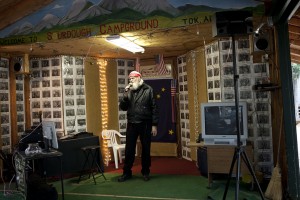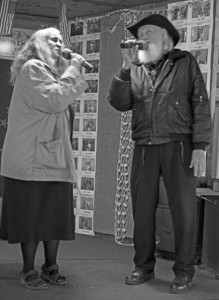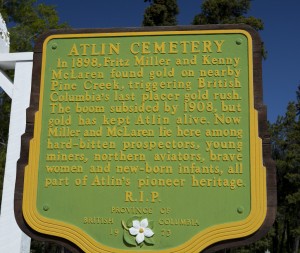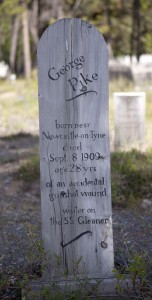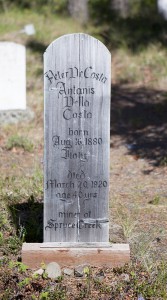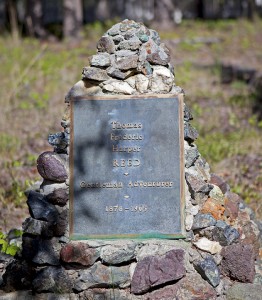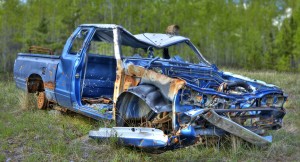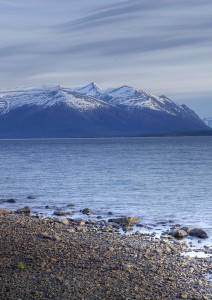Hallo Bay Bear Camp, located on five acres, is bordered on three sides by the Katmai National Park and on the fourth side by Shelikof Strait, about an hour by bush plane from Homer, AK. After landing on the beach in front of the camp (a new experience), we were introduced to the camp & how we would go about observing the bears (and any other wildlife we might encounter).
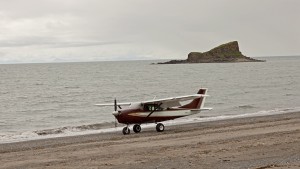
One of the planes we flew in
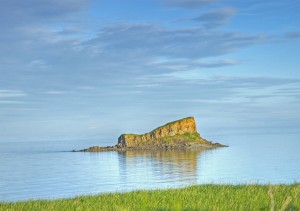
The Rock in Shelikof Strait as seen from the camp
The owners have established an eco-friendly camp with energy generated by solar panels and wind mills. Their key objective is to provide the utmost safety for their visitors as well as to preserve the natural habitat for the brown bears – the largest land carnivores in North America. Each morning, after a sumptuous breakfast, seven of us hiked out onto the beaches and meadows led by our guide, Brad. Our only protection from the bears was Brad’s expert knowledge and experience, his flapping raincoat when a bear got too near, and a flare when a bear got too too near. Otherwise, we were completely open and exposed to these giant brown bears. Most times we sat about 30 feet from them. We were so close we could hear the sound of their yanking the grass from the meadow and chewing it. In the evening, after an excellent dinner, we would again head out to the beaches and meadows to observe these awesome creatures. We not only observed bears, but saw wolves, eagles, a sea otter and a number of other birds.
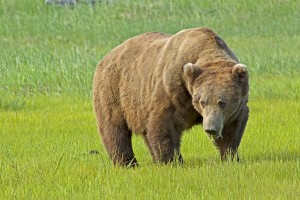
Clyde (otherwise known as scar face)
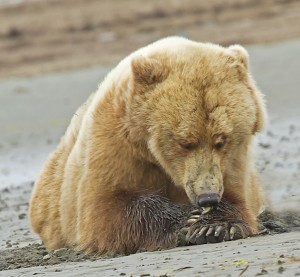
Clamming
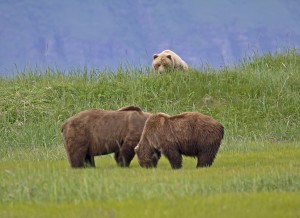
Checking things out
Right now is the mating season and the bears are either digging for clams on the beach or grazing in the expansive meadows in the shadow of the mountains. Come July they will move to the rivers and falls for the salmon run. For hours, we sat silently, photographing their movements, observing the nuances of communication among and between them. We watched the aggressive bears bring the more timid to submission just through a look or a slight movement of the head. Each seemed to recognize who was in charge. Both males and females would occasionally challenge the alpha bear (a HUGE male with many scars on his face & a chunk taken out of his shoulder – remnants of previous battles) by closing in on his territory only to back off when he took notice of them. Others would make a wide path around a group of bears just to avoid confrontation. At one point, 2 bears suddenly started a chase heading directly at us. We all stood up not sure what to do. Brad held us in place as the 2 charged within 15 feet of us running over the ridge and onto the beach. As the adrenaline rushed through us we headed to the top of the ridge and watched the 2 continue their confrontation. With teeth bared and growls emanating from each, we watched them challenge each other for position. For a while, neither backed off. Then one stepped back, lowered its head and began to lie down. The other bear waited a minute and then slowly walked off, looking back several times before it returned to the meadow— on a path about 30 feet down from where we stood. What a climax to an incredible evening. I don’t think any of us had been that close to a brown bear before.
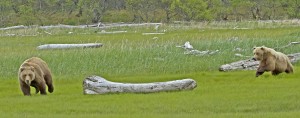
The chase
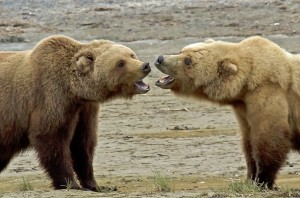
The Confrontation
Here’s a short video of the bears:
http://www.youtube.com/watch?v=K1fpk5HXrmk
Our accommodations at camp were relatively primitive. We stayed in “cabins” equipped with a battery operated lamp (not very effective), small propane heaters, a large container of water for washing (sink with bucket under it), and a cot with a sleeping bag and pillow. Surprisingly the cot was relatively comfortable and the sleeping bag was perfect for the cool temperatures. The Galley, a much larger version of our “cabins”, was where we ate our meals, socialized or just hung out. No food was permitted outside the Galley and no one was permitted beyond a certain point in the camp without one of the staff. The only drinking water was from a spigot in the kitchen. The high tech outhouses had a sophisticated composting system and the showers were operated with a tankless water heater. We were provided with 3 wholesome meals each day plus cakes, cookies, coffee, tea and an assortment of snacks. Believe me, we were never hungry.
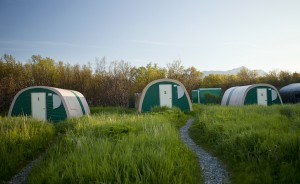
The Cabins
We had no problem burning off the carbs during the strenuous hikes on the beach, through the brush and the mud and the hours of sitting in the cold and the wind. They provided us with knee high rubber boots for the times we had to navigate the deep mud and muck. All carried backpacks and camera equipment as well as raingear and additional clothes to accommodate the changes in weather. At times the chilling winds whipped through us. At other times the sun would come out causing us to shed our outer wear. You never knew from one minute to the next what the weather would be. But there were always the bears, grazing and moving in their own world, not quite oblivious to us but definitely unthreatened. All the discomfort was worth being out there with these incredible animals.
When we arrived at camp on Friday, the 24th, we had been scheduled to spend the night and return to Homer on Saturday. However, things are not that simple when you have to fly in small 4 or 5 seat planes over the water and the mountains. The weather was such that they could not get a plane in. On Sunday, the weather was iffy and one plane that started out to Katmai had to turn around. We were told that if we did not get out Sunday, the likelihood of getting out in the next 2 days would be minimal. Luckily, the weather cleared enough for a plane to get through and get us back to Homer. Exhausted from our trip, we were happy to finally see the mountains and glaciers of Katchemak Bay.
That evening we had a seafood feast at our friends’ Jerry & Stephanie’s house overlooking the mountains & glaciers at the head of Katchemak Bay. We feasted on shrimp, Dungeness & Alaska king crab with rhubarb cobbler (made from their homegrown rhubarb) and ice cream for dessert. We drove back to the motor home tired, sated, and thoroughly contented.

